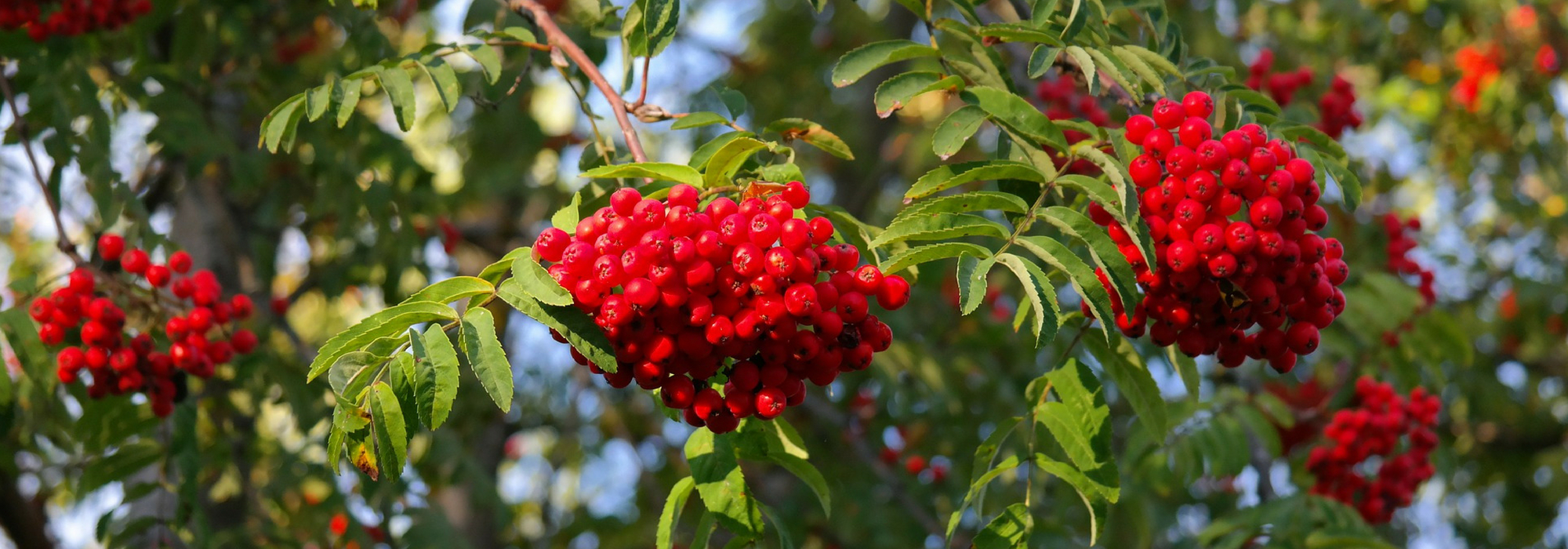
Sorbs, whitebeam: plant, prune and care
Contents
Rowan in a nutshell
- Rowans are perfect trees for small gardens as they have an upright habit and take up little space in the soil.
- Their orange, red, pink, or white berries are very decorative at the end of summer.
- The single or compound foliage, with its glossy dark green, adorns itself with vibrant hues in autumn.
- Very hardy, these trees provide food for birds and can be planted in isolation, both in the city and in the countryside, or within a country hedge.
A word from our expert
Rowans, Sorbus in Latin, are easy-to-grow bushes that thrive in well-defined winters. They are renowned for their hard and dense wood as well as their decorative fruits, which are especially favoured by birds. The mountain ash or rowan is highly regarded for both its ornamental role and its ecological function. Sorbus aucuparia forms a small tree with a graceful, well-balanced rounded silhouette, featuring feathery leaves that turn golden yellow in autumn and is abundant with small vermilion berries from July to December. Hunters used these berries as bait to attract thrushes, hence its other name “thrush tree”. The domestic rowan, on the other hand, is often planted near houses because its fruits, known as corms or sorbs, which resemble small pears (2.5 cm long) or reddish-brown apples, have a sweet taste when over-ripe (brown), making excellent jams and syrups.
While the mountain ash (Sorbus aucuparia) fears drought and prefers cool climates, – it can be found as far as Iceland and the boreal Asia – the domestic rowan (Sorbus domestica) enjoys the warmth of southern Europe and can be found as far as North Africa. The latter is valued for the quality of its timber, just like the service tree (Sorbus torminalis), another native species familiar to the forests of the eastern Paris Basin, Centre, and Poitou-Charente, whose distribution area extends to the Caucasus and the Middle East.
Rowans are hardy trees, tolerating frosts of up to -25°C on average, easy to grow, very floriferous, and require no care. They exhibit rapid growth during the first 20 years, which then slows down. The introduction of new cultivars and Asian species offers a variety of forms and exceptional berry colours that deserve more frequent use in landscaping. The only precaution is to plant them away from a terrace or a tarmacked path due to the mess caused by the quantity of fruits and their appeal to birds.

Flowering and foliage of Sorbus aucuparia.
Description and Botany
Botanical data
- Latin name Sorbus sp.
- Family Rosaceae
- Common name Rowan, service tree, sorb tree
- Flowering between May and July
- Height between 6 to 30 m
- Exposure full sun or partial shade
- Soil type any well-drained soil, rather cool
- Hardiness Very good most often
The genus Sorbus includes over 200 species of trees and bushes that inhabit only the cool temperate or even southern climate of the northern hemisphere. It belongs to the Rosaceae family and features terminal corymbs of cream or pink flowers that are often malodorous, along with generally decorative fruits. The foliage, whether simple or compound, often takes on lovely autumn hues.
Sorbus aucuparia, known as rowan in English, which is the most common in our gardens, is a pioneering tree found in mid-altitude areas that often grows isolated, thanks to seed dispersal by birds. It appears in the eastern and northern halves of France, frequently at forest edges and in open areas, on well-drained, stony, acidic soils, but sometimes also on basic calcareous or chalky soils. It does not appreciate heavy or compacted soils that can suffocate it, nor does it tolerate salt spray.
Its trunk, rather short and slender, has a smooth, silver-grey bark speckled with lenticels, which becomes black and slightly cracked with age. It bears a rounded crown that is densely branched. The twigs are reddish-brown, pubescent then glabrous, and bear villous buds. In nature, the rowan often forms a clump of several stems that arise from the ground. It tolerates coppicing well. Its lifespan is about 150 years.
The alternate foliage, measuring 15 to 20 cm long, is composed of 9 to 15 finely dentate leaflets, except at their base in this species, but other rowans like the service tree (Sorbus torminalis) or the whitebeam (Sorbus aria) have simple or lobed foliage. The lamina of Sorbus aucuparia is dark green and shiny on top and lighter green underneath.
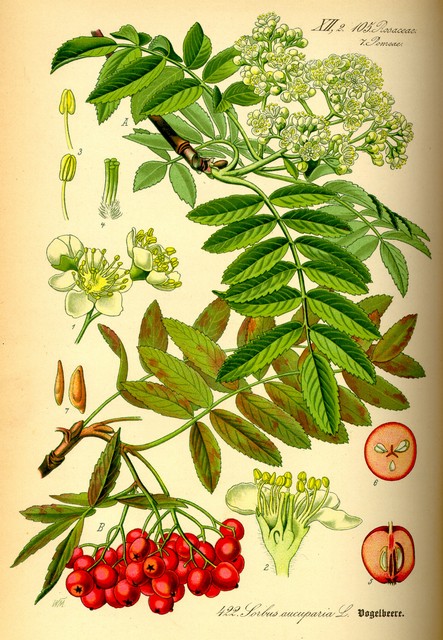
Sorbus aucuparia – botanical illustration
The cream inflorescences, 10 to 15 cm in diameter, are dense and consist of about 250 hermaphrodite flowers measuring 6-15 mm, with a scent that is more or less appreciated, blooming between April and June. The corolla, with 5 round petals, showcases a profusion of 15 to 20 stamens that attract not only flies but also beetles, moths, bees, and wasps.
The vermilion berries, known as “sorbs,” create a striking contrast with the intense green foliage starting in July, after which the latter turns shades of yellow, orange, and red that transform the landscape in autumn. The berries are then consumed by birds, particularly thrushes, crows, and bullfinches. The seeds have a deep dormancy that requires up to 6 months of stratification to germinate.
The berries offer a range of varied colours, such as the creamy white tinged with pink of Sorbus cashmiriana, the bright pink of Sorbus alnifolia, the scarlet red of Sorbus commixta ‘Belmonte’, or the soft yellow of Sorbus aucuparia ‘Xanthocarpa’. Sorbus aucuparia ‘Edulis’, known as the Moravian rowan, is a more vigorous tree than the typical species, adorned with larger, sweeter, and edible berries. Consumption of the berries by humans can lead to digestive issues; it is preferable to cook or distill them (used in Europe for kirsch or to flavour vodka in Poland), while the leaves of the rowan have medicinal properties.
Botanically, these are false fruits (pyridion) and not true berries, similar to apples or pears formed by the hypertrophied floral receptacle that covers the mesocarp. The fruits of the service tree (Sorbus torminalis), called “alises,” differ somewhat from those of common rowans: they are ovoid, with a leathery skin that is bronze-coloured and speckled with warts, reaching a size of 1.2 cm in diameter. Ripe in September-October, their acidity diminishes after a long ripening process independent of frost. They can be consumed bletted or made into liqueur. They were used to treat colic and to flavour beer before the use of hops in Ireland. The flowers and leaves were used in decoctions against flu, ear infections, and tuberculosis. The corms of the domestic rowan, very astringent when the flesh is hard and the skin reddish, can also be consumed once the flesh has softened and the skin has darkened.
The hard, dense, pinkish-white wood of the rowan was used to make tool handles and wear parts due to its hardness and density. The wood of the service tree, with a reddish heartwood that varies in darkness, is also valued for making tools, musical instruments, cabinetry, turning, and marquetry…

Evolution of the flowering of Sorbus aucuparia.
The main varieties of rowans
Various vernacular names refer to trees of the genus Sorbus such as service tree or domestic sorbus (Sorbus domestica), wild service tree (Sorbus torminalis), whitebeam (Sorbus aria), and Fontainebleau whitebeam (Sorbus latifolia). The bird cherry is the species that has given the most cultivars such as a form with highly dissected leaves reminiscent of a fern ‘Aspleniifolia’, a form with yellow-orange fruits ‘Xanthocarpa’, a weeping form ‘Pendula’, a conical narrow ovoid habit ‘Sheewater Seedling’ ideal along an avenue… ‘Gibbsii’ is a beautiful hybrid between Sorbus aucuparia and aria, with a spreading habit and garnet fruits, while ‘Joseph Rock’ is a taxon of imprecise East Asian origin with large clusters of bright yellow fruits and superb autumn colours. Sorbus commixta ‘Belmonte’ displays large clusters of glowing fruits…
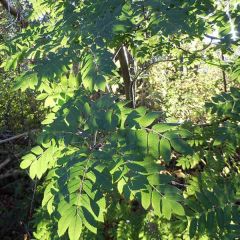
Sorbus aucuparia
- Flowering time June, July
- Height at maturity 8 m
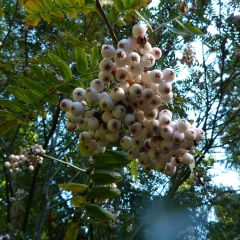
Sorbus cashmiriana
- Flowering time June to August
- Height at maturity 8 m
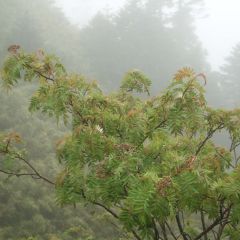
Sorbus randaiensis
- Flowering time June, July
- Height at maturity 5 m
Discover other Sorbus - Mountain Ash
View all →Available in 1 sizes
Available in 1 sizes
Available in 1 sizes
Available in 1 sizes
Available in 1 sizes
Available in 1 sizes
Available in 1 sizes
Available in 1 sizes
Available in 1 sizes
Available in 1 sizes
Planting a rowan tree
Where to plant the Rowan?
Rowans, valued for their light shade, are generally very hardy. The mountain ash, absent in the west and the south, tolerates partial shade but prefers full sun as long as the atmosphere remains moist. It enjoys being at the edge of a thicket to benefit from the ambient coolness. Planting it in isolation should be reserved for cool climates as its bark is sensitive to the sun and it fears drought. In heavy soil, rooting remains superficial, making the rowan susceptible to wind damage. Avoid planting it by the sea or in a location that is too mineral-rich.
The whitebeam (Sorbus aria), particularly its cultivar ‘Majestica’, with an upright habit of 10-15 m high, is appreciated in urban areas as it tolerates pollution, limestone, and sea spray well.
Do not plant the rowan too close to a slab or terrace as the multitude of fruits can stain the ground and make it slippery.
When to plant?
Plant Sorbus preferably in autumn or late winter from October to March to ensure deep rooting before facing summer drought.
How to plant?
Here are the different steps to plant a rowan:
- Soak the root ball in a bucket of water to thoroughly moisten it.
- Dig a planting hole, 50 cm in all directions, loosening the soil well. Add one or two buckets of coarse sand or gravel to the filling soil to facilitate aeration around the roots, as well as a 10 cm drainage layer (gravel, sand…) if your soil is very clayey.
- Add manure or decomposed compost if the soil is sandy.
- Position the rowan just at soil level so that the collar is not buried.
- Replace the soil and lightly compact it.
- Water.
- Spread a layer of mulch at the base to maintain good moisture around the roots and limit the growth of weeds.
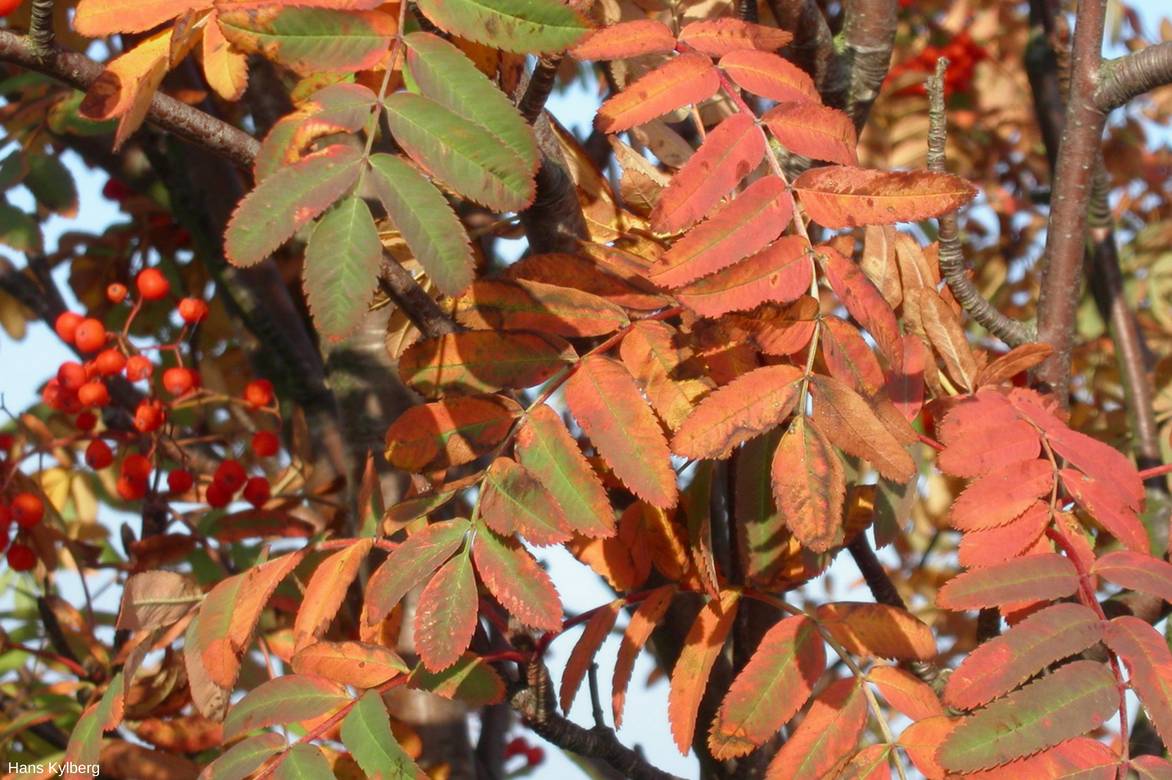
Autumn foliage of Sorbus aucuparia
Care
Ensure the maintenance of cool soil through generous watering during prolonged dry spells, for the first two years. Cut the suckers, the shoots at the base of the trunk to maintain the plant on a single trunk. Remove any rootstock shoots located above the graft point as well as dead wood and branches that rub against each other. Pruning can be carried out throughout the winter period before the resumption of vegetation. Limit the branches to 4-5 well-balanced leaders so that they can branch out without hindrance.
Potential Diseases and Pests
Fire blight is the main disease to be wary of in rowans, knowing that cutting and burning the tree is necessary in this case. It manifests as browning of twigs that appear burnt in the shape of a crozier. Mites, aphids, and scale insects have minor consequences and rarely require treatment. The foliage can also be affected by powdery mildew, which creates a whitish deposit. In general, it is advisable to avoid planting rowans near an orchard to prevent mutual contamination of these species that are susceptible to the same ailments.
Multiplication
Separate the suckers, which are common at the base of the tree, by pulling them out and place them to root in loose soil in autumn.
Sowing is carried out after a cold period that can last up to 6 months. The simplest method is to collect natural seedlings facilitated by the intervention of birds.
Uses and associations
Sorbs are most often used in isolation within a clearing, in free hedges, but also in alignment along a pathway.
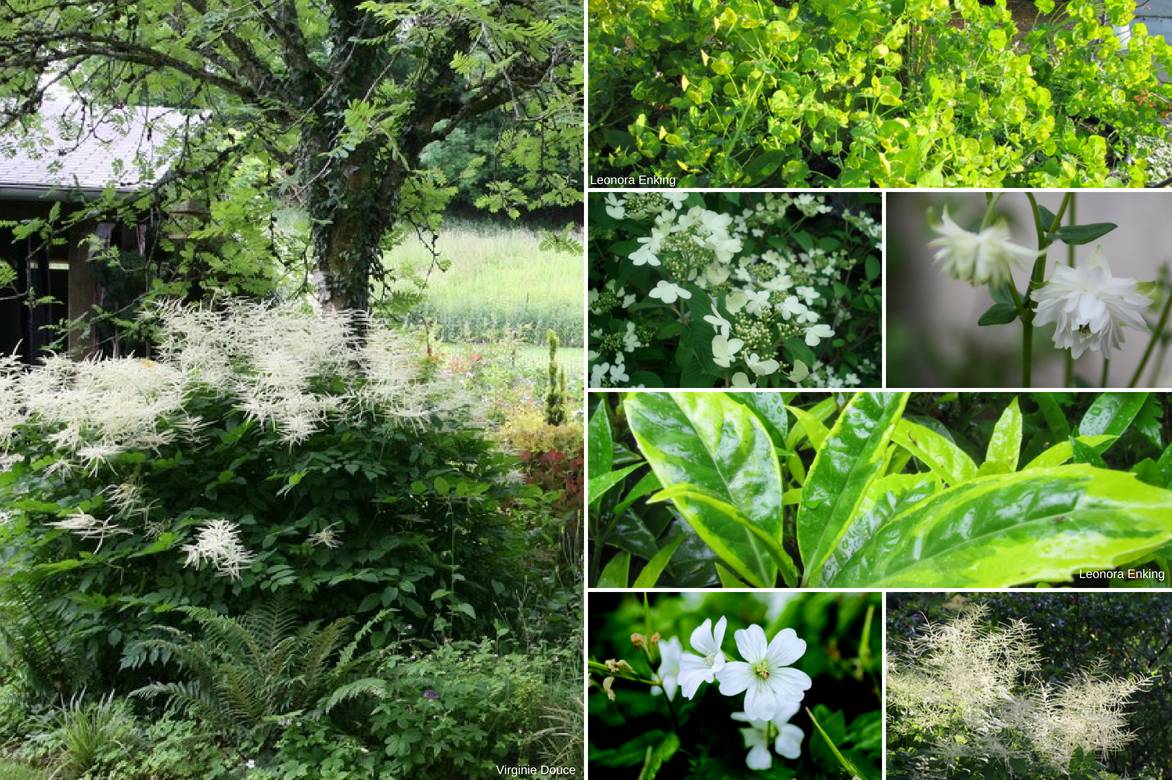
An example of spring mass association: Sorbus aucuparia, Euphorbia amygdaloïdes var. robbiae, Viburnum plicatum ‘Watanabe’, Aquilegia ‘Green Apples’, Aucuba japonica ‘Sulphurea Marginata’, Geranium nodosum ‘Silverwood’, Aruncus dioïcus.
The rowan or the Taiwanese sorb are modest trees that can also be used in the background of flower beds, alone or mixed with other varieties that have autumn foliage such as Prunus, hazel, caramel trees, Persian parrotias, or maples. They can be integrated into a wild hedge, accompanied by large bushes like Hippophae rhamnoïdes, Cotoneaster ‘Cornubia’, Euonymus myrianthus, and of course the vibrant spireas in autumn.
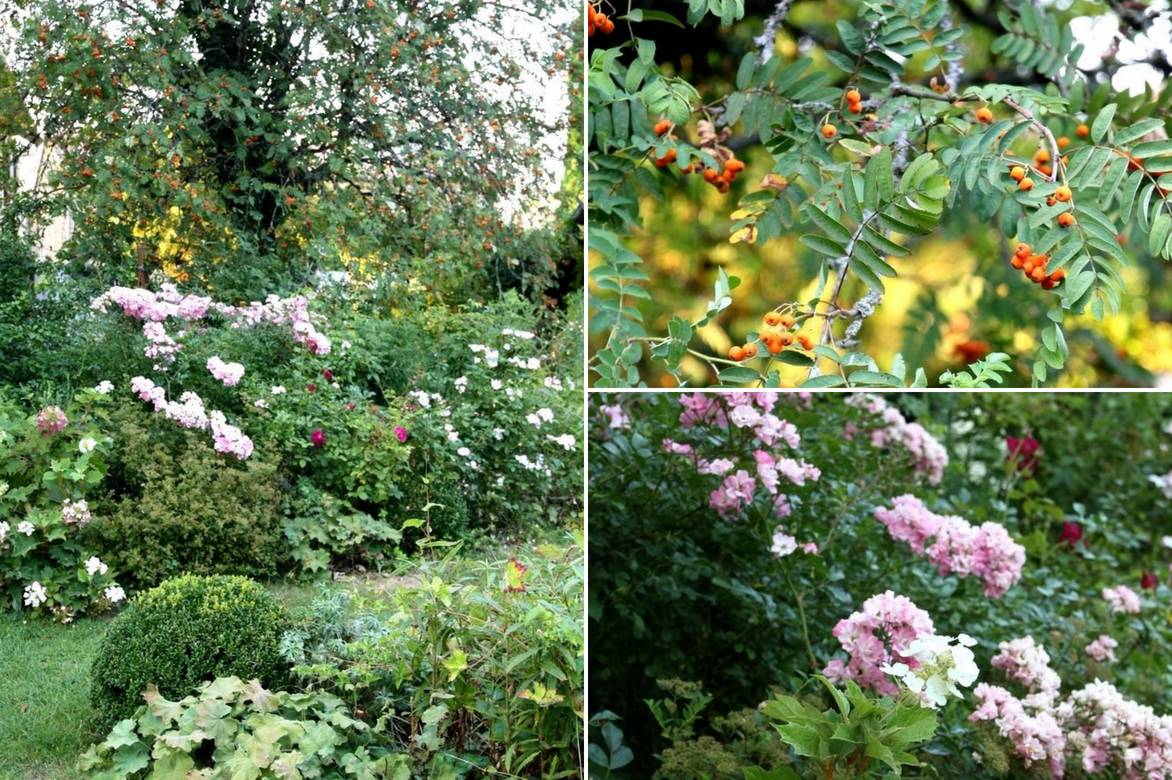
An example of summer mass association: Sorbus aucuparia, ‘Castor’ roses and ‘Munstead Wood’ among others, Hydrangea quercifolia ‘Burgundy’ (photos by Virginie Douce).
Large grasses like Miscanthus, a Rhamnus frangula Asplenifolia, and a few plants of Helianthus or orange chrysanthemums will accompany them late into the season.
Sorbs root relatively shallowly, especially if the soil is compacted at depth, and it is not uncommon to see an adult tree toppled by a storm. Therefore, avoid placing them too close to buildings and in full wind.
Did you know?
The genus name Sorbus comes from the Latin sorbeo from the verb “to drink,” signifying the astringency of the fruits, which induce thirst when consumed. The specific name aucuparia means “that catches birds,” while “torminalis” indicates that “it is good against colic” (tormina).
The rowan tree was considered a talisman, and it was customary to plant them around houses to protect against evil, as well as to carry a fragment of wood on oneself or on livestock for protection against lightning.
To go further
Discover our wide range of rowan trees, service trees or medlar trees.
- Subscribe!
- Contents
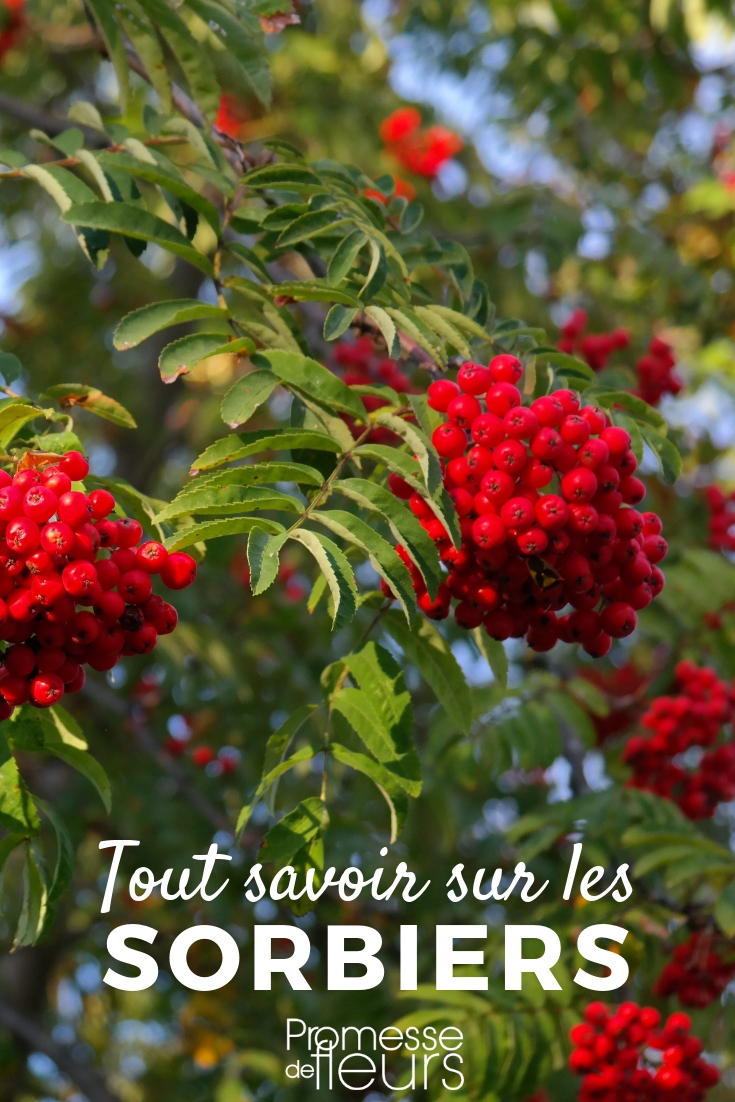































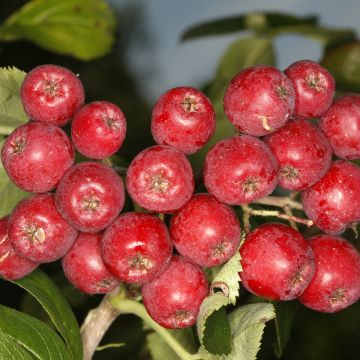
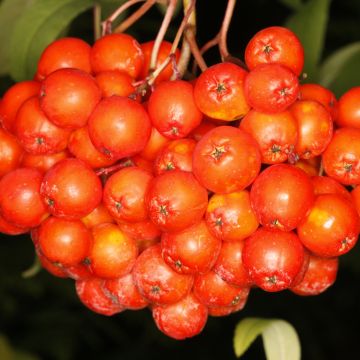

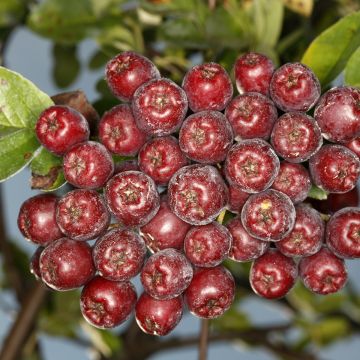
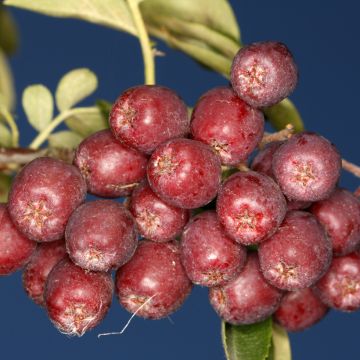
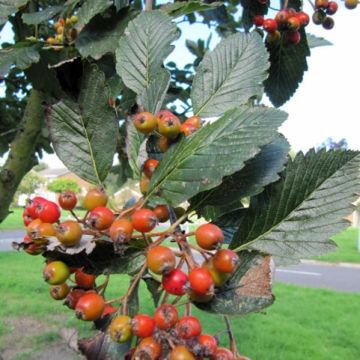
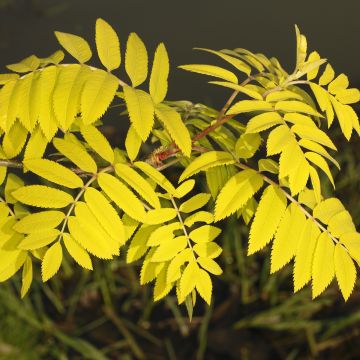
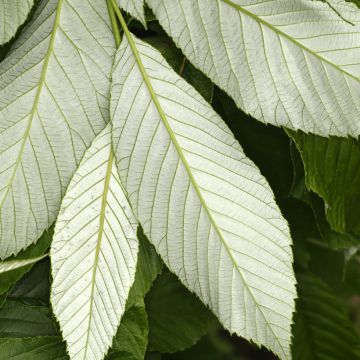

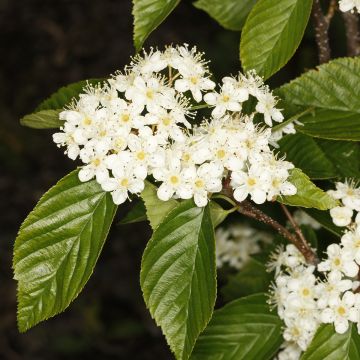
Comments